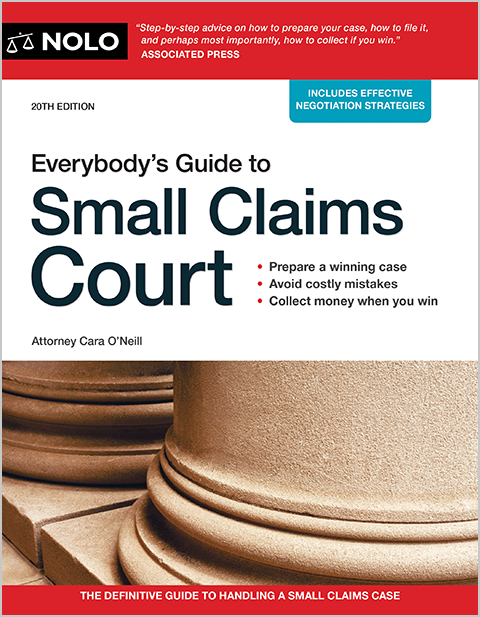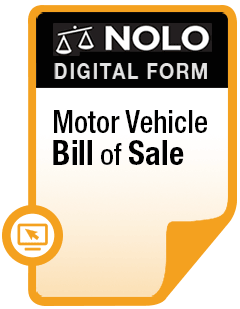When you're in a parking lot accident, fault for the crash isn't usually clear-cut. Here are some key issues to consider.
When it comes to car accidents in parking lots, here's what you need to know:
- Injuries in these types of car accidents often aren't all that serious (unless a pedestrian is involved), but vehicle damage can be extensive.
- With cars coming and going in every direction in a parking lot, figuring out who was at fault for a car accident can be tricky.
- Right-of-way rules, stop signs, location of vehicle of damage, and even surveillance video can all play a part in a fault determination after a parking lot car accident.
- Determining Fault In a Parking Lot Accident
- Rear-End Accidents In Parking Lots
- Parking Lots and Right-of-Way Rules
- Pulling Into and Out of Parking Spots
- What If I Hit a Parked Car and Can't Find the Vehicle Owner?
- Why Fault Matters In a Parking Lot Accident
- Injury Claims and Compensation After a Parking Lot Accident
- Next Steps After a Parking Lot Accident
Determining Fault In a Parking Lot Accident
After any kind of car accident, the drivers' insurance companies will investigate the accident and try to figure out how it happened and who was at fault. That means talking to drivers and witnesses, inspecting vehicle damage, looking at photos, and tracking down any other evidence that might help fill in the fault picture. Get the basics on proving fault for a car accident.
Rear-End Accidents In Parking Lots
The fault rules in a rear-impact car accident are the same no matter where the collision occurs: the tailing driver is almost always responsible for causing the crash. It's no different in a parking lot. It's the tailing driver's legal duty to keep a safe distance from the leading vehicle, and the failure to do so can amount to negligence, and a fault finding. (Negligence is the legal doctrine that governs fault in most car accident cases.)
Even in a parking lot, that means if the leading driver comes to a stop—even suddenly, to avoid hitting someone who runs into the parking lane, for example—the tailing driver will almost always be deemed at fault if they collide with the leading driver's rear bumper. Learn more about fault in rear-end accident cases.
Parking Lots and Right-of-Way Rules
In a typical shopping center or office building parking lot, there are numerous lanes with cars parked on both sides, plus through lanes around the lot's perimeter, from which vehicles enter the parking lanes.
As a general rule, the vehicles in the through lanes have the right of way, and drivers approaching the through lanes from the parking lanes must yield the right of way to drivers in the through lanes. So, if a driver pulls out into a through lane as they are attempting to exit a parking lane, and collides with a vehicle traveling in the through lane, the driver exiting the parking lane will probably be deemed at fault for the accident. An exception to this general rule applies when the driver of the vehicle in the through lane fails to obey a "STOP" or "YIELD" sign that gives the right of way to vehicles exiting the parking lanes.
Left Turn Accidents In Parking Lots
The same goes for left turn accidents, i.e. when a driver tries to pull into a spot by turning left, but fails to do so safely, and collides with a vehicle coming down the parking lane from the opposite direction. The turning driver in this situation failed to observe right-of-way rules and would be considered at fault for the parking lot accident.
Pulling Into and Out of Parking Spots
In addition to accidents that occur in a parking lot's through lanes and parking lanes, collisions also occur when two vehicles are backing out of spots on opposite sides of the same parking lane. In this scenario, fault can be difficult to determine because, under the legal doctrine of negligence, both drivers have a duty to make sure that it's reasonably safe to back into the lane of travel before doing so.
When one vehicle has already started to back up, the driver of the vehicle on the opposite side of the parking lane should take reasonable care to observe the other moving vehicle and wait before proceeding to exit the parking space. If the driver does not do so and strikes the other moving vehicle, he or she will likely be deemed at fault for the accident.
However, when it is unclear which vehicle began to back out first, and there is a collision in the middle of the parking lane, a determination of fault is much harder to make. Unfortunately, these instances of "simultaneous backup" seem to be the most common type of parking lane accident, and you should not assume you are at fault just because you backed into another vehicle while exiting your parking space.
What If I Hit a Parked Car and Can't Find the Vehicle Owner?
Not all parking lot accidents involve two moving vehicles. With so many cars and trucks in what's often a fairly congested area, it's inevitable that a driver looking for a parking spot—or just navigating a crowded lot—might end up hitting a parked vehicle. In this situation, what you're required to do is dictated by the law in your state, and there are steps you should take to protect yourself no matter where you live. Learn more about what to do if you hit a parked car.
Why Fault Matters In a Parking Lot Accident
Fault determinations are important for the drivers involved in parking lot accidents, especially when it comes to whether your car insurance policy will cover damage to the vehicles and any personal injuries that occur.
Not only does fault for a parking lot accident usually determine whose car insurance policy will apply, it can also have a financial impact on the driver who is ultimately found to be responsible for the crash. If that driver is uninsured, they'll be personally on the financial hook for anyone else's injuries, vehicle damage, and other losses. And even when a driver is insured, if their coverage is liability-only (meaning it only applies to cover losses suffered by the other driver) their own vehicle damage might go uncovered (unless they've purchased collision coverage).
Injury Claims and Compensation After a Parking Lot Accident
It's not uncommon for drivers (and especially pedestrians or bicyclists) to suffer significant injuries in a parking lot accident. If this happens, the spectrum of losses that the injured person might be entitled to compensation for includes:
- medical bills
- lost income and other out-of-pocket losses, and
- physical and mental "pain and suffering" stemming from the accident, the injuries, and any necessary medical treatment.
These losses and more (called "damages" in legalese) can be covered in an insurance settlement, but if the two sides can't come to a satisfactory resolution in the insurance claim process, the next step would be filing a lawsuit in court over the accident, where the party found at fault would be ordered to pay the winning party's damages. Learn more about car accident lawsuits.
Next Steps After a Parking Lot Accident
Protecting yourself and your legal rights starts at the scene of your parking lot accident, and best practices are no different from those you'd follow if you got into a crash on the street or on the highway. For starters, be careful what you say at the car accident scene—don't admit fault even if you think you're to blame, most importantly—and let the insurance companies sort everything out through their own claim investigations.
Gather Evidence
But do make sure you gather evidence related to the accident, take photos of vehicle damage and of anything else that might be relevant to a fault determination, and try to get the name of the owner or operator of the parking lot, in case you need to inquire about the availability of security camera footage or other video evidence. Learn more about what to do after a car accident.
Report the Accident
Next, let your car insurance company know what happened, even if you think the parking lot accident resulted in little or no damage or injury. Learn more about why it's important to report a minor accident to your car insurance company.
Talk to a Car Accident Attorney
Especially if you've suffered injuries, or the other driver (and their insurer) is trying to pin fault for the parking lot accident on you, it might be a good idea to discuss your situation with a skilled legal professional. Learn more about how an attorney can help with a car accident claim.
- Determining Fault In a Parking Lot Accident
- Rear-End Accidents In Parking Lots
- Parking Lots and Right-of-Way Rules
- Pulling Into and Out of Parking Spots
- What If I Hit a Parked Car and Can't Find the Vehicle Owner?
- Why Fault Matters In a Parking Lot Accident
- Injury Claims and Compensation After a Parking Lot Accident
- Next Steps After a Parking Lot Accident



